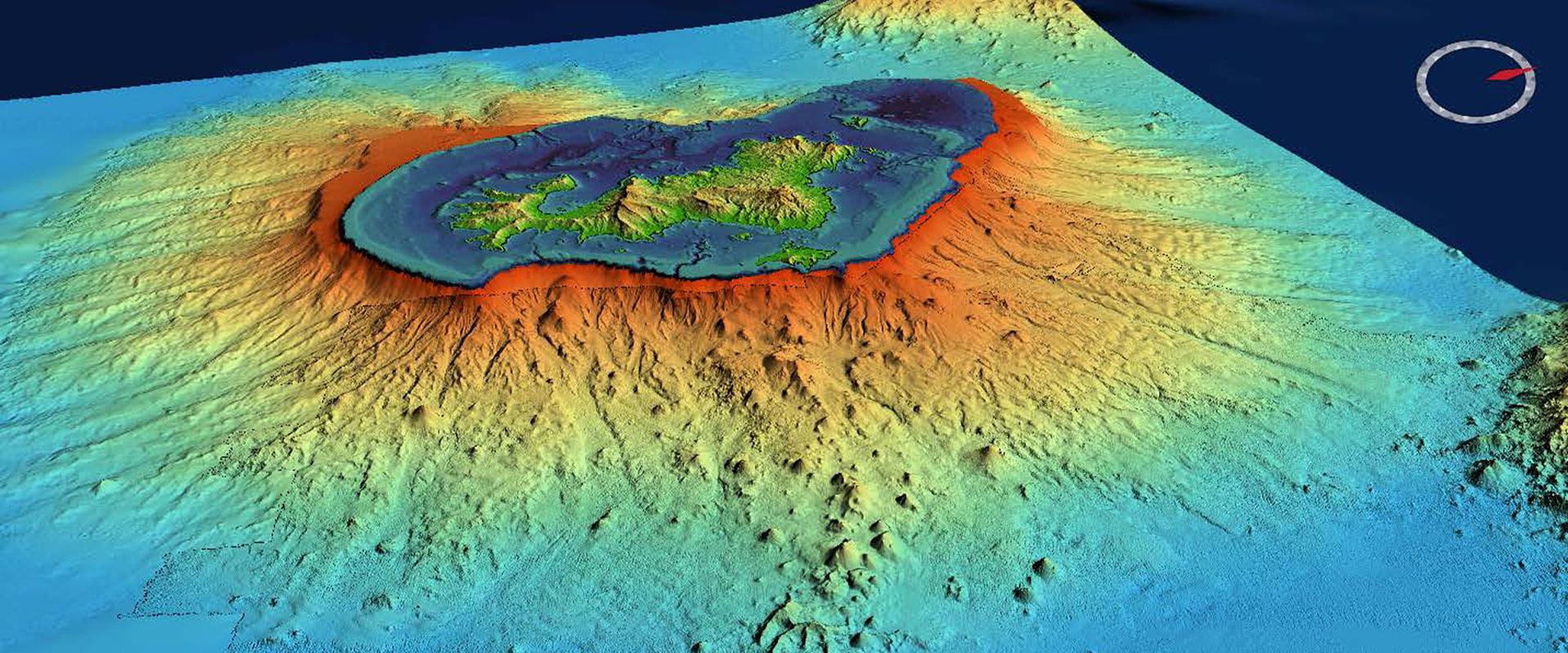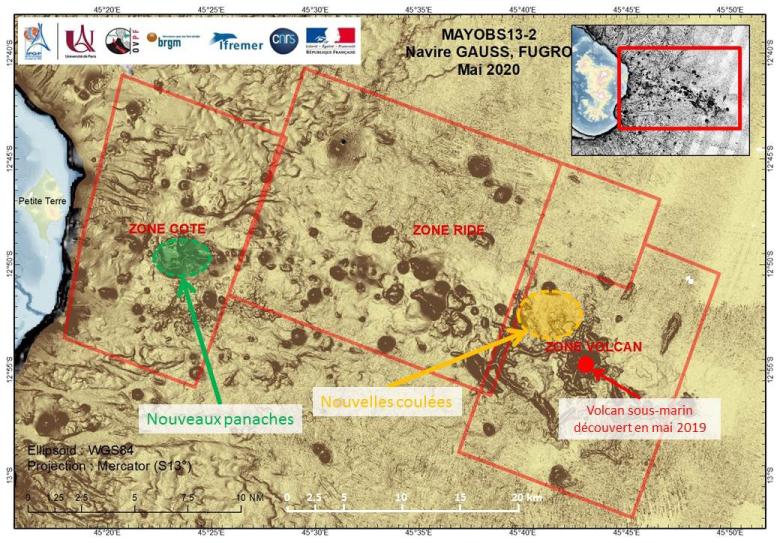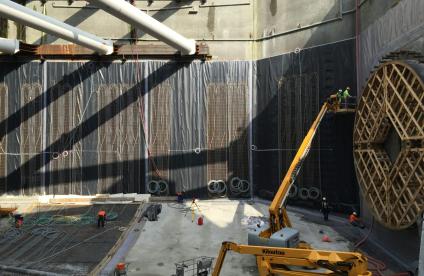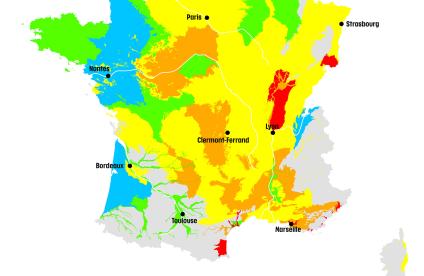Élisabeth BORNE, Minister for Ecological and Inclusive Transition, Frédérique VIDAL, Minister for Higher Education, Research and Innovation, Annick GIRARDIN, Minister for Overseas France and Florence PARLY, Minister for the Armed Forces, are pleased to announce the successful completion of the oceanographic observation missions to monitor the volcanic and seismic phenomena in Mayotte, which were conducted despite the constraints imposed by the current health crisis. Carried out as part of the specific surveillance programme (REVOSIMA) set up in 2019 and coordinated by the French Inter-ministerial Delegation for Major Overseas Risks, the observation campaigns therefore continue to provide all the information needed to protect the population of Mayotte.
From 4 to 11 May 2020, an initial oceanographic campaign managed remotely by IFREMER, IPGP, BRGM and CNRS (MAYOBS 13-2) was carried out on the Fugro Gauss, a ship owned by the company Fugro. The campaign gathered surveys of the seabed and pictures of the water column covering an area of approximately 1500 km2 east of the island of Mayotte.
The surveys of the seabed have already revealed that the topography of the volcano (discovered in May 2019 about 50 km off the east coast of Mayotte) has undergone no major changes since last August.
However, as regards the relief of the seabed in the entire area (known as the volcano zone), changes have been observed in a section covering roughly 5 km2 to the north-west of the volcano. The change could be due to new magma flows, and analyses are being conducted to assess the thickness, extent and volume of the flows. These flows show that there is continuing volcanic activity, further confirmed by the identification of two new plumes of hot fluids at a depth of 1400 m in the vicinity of earthquake generation zones (earthquake swarm).
These observations were supplemented by a second campaign (MAYOBS 13-1) which was carried out from 6 to 19 May 2020, aboard the French Navy's overseas support and assistance vessel Champlain. The data recovered from the seabed seismometers during this campaign are crucial for improving our understanding of the seismic phenomena, which are continuously monitored by networks of onshore seismographs. The data, which concern a period covering several months, will be processed and published at the end of June. Reconditioned seismometers have been installed underwater for a new series of measurements that will last about 6 months.
The Ministers would like to thank all the staff, scientists, engineers, technicians and administrative personnel who worked in particularly difficult conditions to carry out this scientific campaign, thereby actively contributing to the Government's commitment to protecting the population of Mayotte.








